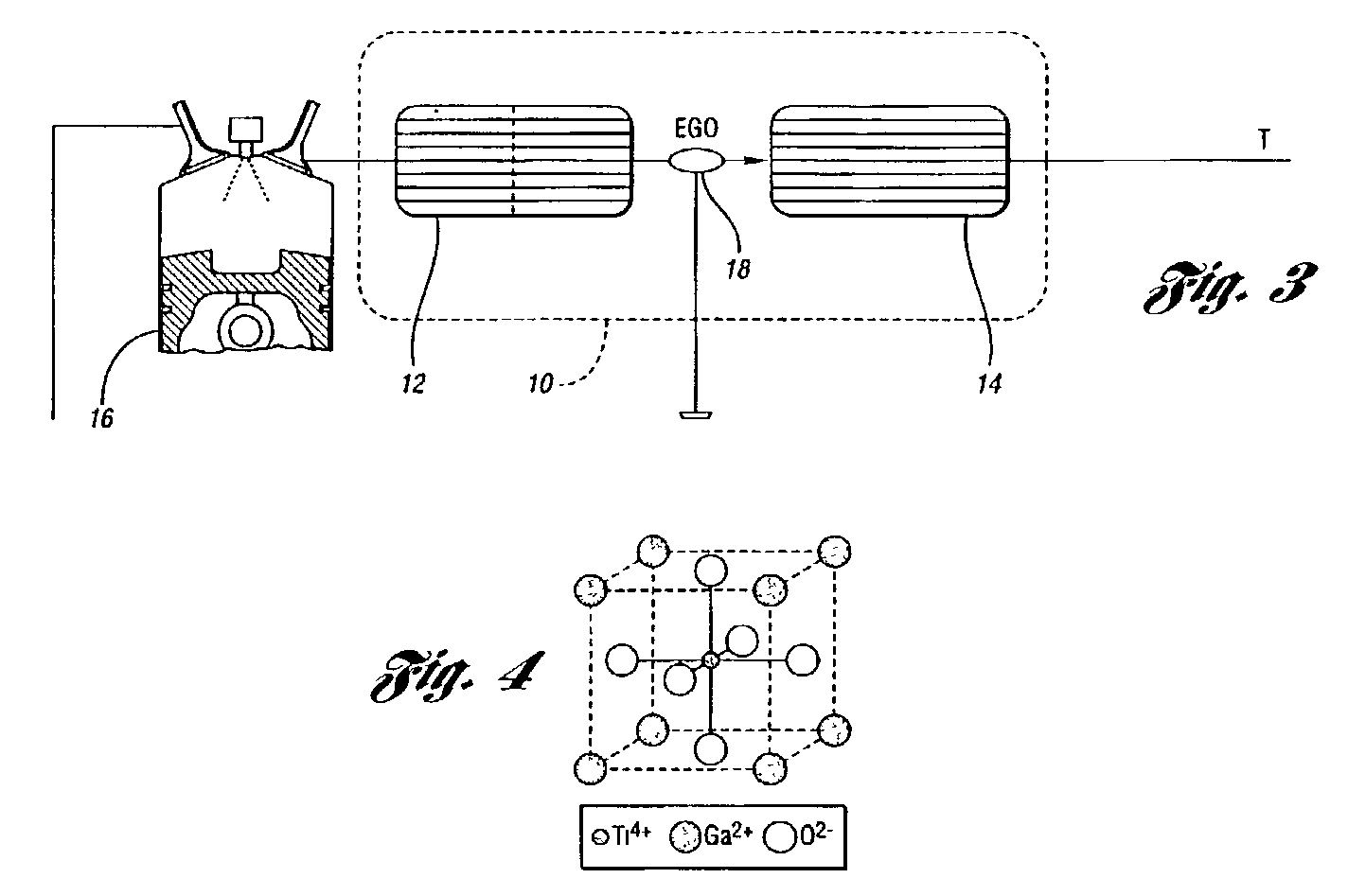Perovskite catalyst system for lean burn engines
a catalyst system and burn engine technology, applied in physical/chemical process catalysts, metal/metal-oxide/metal-hydroxide catalysts, separation processes, etc., can solve the problems of hego sensors, hego emissions, and hego bias, and achieve low cost catalysts, reduce emissions from exhaust streams, and low cost
- Summary
- Abstract
- Description
- Claims
- Application Information
AI Technical Summary
Benefits of technology
Problems solved by technology
Method used
Image
Examples
example 2
[0063] The sample is prepared by the same method as described in Example 1 with the exception of adding 16.25 g of Rh(NO.sub.3).sub.3.2H.sub.2O to 500 ml deionized water instead of Pt(NH.sub.3).sub.4(NO.sub.3).sub.2. The resulting powder is La.sub.0.5Ba.sub.0.5Co.sub.0.9Rh.sub.0.1O.sub.3.
example 3
[0064] La(NO.sub.3).sub.3.6H.sub.2O(108.25 g), Ba(NO.sub.3).sub.2(65.34 g), Co(NO.sub.3).sub.2.6H.sub.2O(87.31 g), Fe(NO.sub.3).sub.3.9H.sub.2O(6-0.60 g), and Pt(NH.sub.3).sub.4(NO.sub.3).sub.2(19.35 g) are each added to 500 ml deionized water, heated to 100.degree. C., and then mixed together to achieve a solution with the final desired ratios. This stirred solution is heated and allowed to boil before adding a solution containing 0.667 g of citric acid and 4 cm.sup.3 of ethylene glycol per 1 gm of the final oxide mixture. The resulting mixture is evaporated with vigorous stirring until formation of a gel, and then further evaporated on a hot plate at 140.degree. C. to remove the residual liquid. The resulting powder is ground and heated to 300.degree. C. for 6 hours and allowed to cool to room temperature. The powder is ground again and then calcined in air at 900.degree. C. for 30 hours. The final powder composition is La.sub.0.5Ba.sub.0.5Co.sub.0.6Fe.sub.0.3Pt.sub.0.1O.sub.3.
PUM
| Property | Measurement | Unit |
|---|---|---|
| temperature | aaaaa | aaaaa |
| atomic number | aaaaa | aaaaa |
| atomic number | aaaaa | aaaaa |
Abstract
Description
Claims
Application Information
 Login to View More
Login to View More - R&D
- Intellectual Property
- Life Sciences
- Materials
- Tech Scout
- Unparalleled Data Quality
- Higher Quality Content
- 60% Fewer Hallucinations
Browse by: Latest US Patents, China's latest patents, Technical Efficacy Thesaurus, Application Domain, Technology Topic, Popular Technical Reports.
© 2025 PatSnap. All rights reserved.Legal|Privacy policy|Modern Slavery Act Transparency Statement|Sitemap|About US| Contact US: help@patsnap.com



